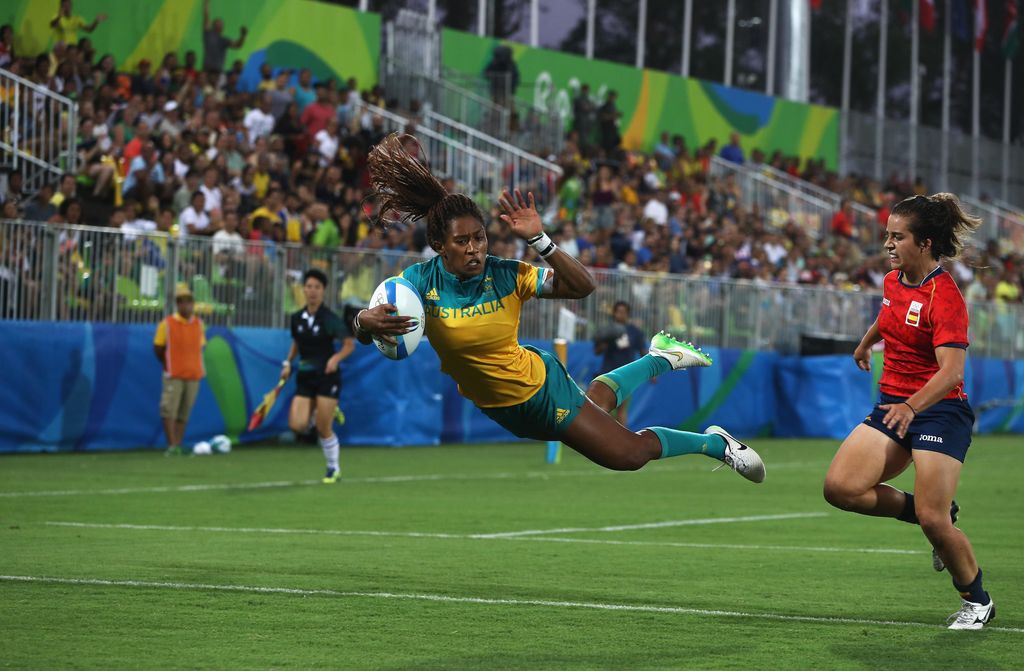On 30 November, 2012, Australia faced the Netherlands in Dubai in the first women’s match on the HSBC World Rugby Sevens Series.
Australia won that inaugural encounter, 24-12, and have gone on to become one of the dominant forces on the World Series. In 2016, the Australians, with a squad boosted by several crossover athletes, beat New Zealand to win gold on rugby’s return to the Olympic Games in Rio de Janeiro.
The inclusion of sevens in the Olympics, allied to the success of the World Series, helped to catalyse an explosion of interest in women’s sevens.
“A few of the players were known in media circles, but women's rugby players weren’t remotely household names,” Sky Sports Rugby commentator Rikki Swannell told World Rugby about the popularity of the game pre-2012.
“Now you think of Tyla Nathan-Wong who played in that first season, Sarah Hirini, they are household names in New Zealand. They walk down the street and people know who they are.”
We asked Swannell to select seven players who embody the growth that women’s sevens has made in the seven-and-a-half years since that first World Series event in Dubai.

Ghislaine Landry (Canada)
Ghislaine has been there from the beginning, playing in the first women’s event in Dubai in 2012. She is so small but whenever the ball is in her hands, she seems to have time to do everything — she doesn’t panic. She has all the skills in the world and such a great brain for the game. She has also been such a great leader for Canada, has taken a lot on her shoulders and is a major reason why they have been consistently one of the top teams on the World Series. Her impact was epitomised by the late try she scored — and converted — to beat England in the final of the HSBC Kitakyushu Sevens 2019.
Sharni Williams (Australia)
Another player who appeared in the inaugural season and continues to have an impact eight years on, I just think Sharni is an incredible woman. I really admire her attitude, her leadership, her ability to take it all on her shoulders. Off the pitch, her hometown in Australia was wiped out by bush fires last year and she used her profile to help out in any way that she could. Her team-mates follow that leadership on the pitch, and her longevity highlights the level of professionalism that is required to take the opportunities that these players are given.
Alev Kelter (USA)
Alev is a really good example of a crossover athlete. She was a very good ice hockey player, a very good football player and was encouraged to give rugby a crack. Gosh, she’s perfect for it because she’s so tough and so aggressive. She’s also got a bit of a hard-nosed attitude, which can get the better of her when it comes to some of her tackling. But ultimately she’s such a skilful player and has the confidence to back herself and pick a line.
Ellia Green (Australia)

I remember going to a media conference for Australia and thinking, this woman is going to be an absolute star. She was obviously the breakout player of the gold-medal campaign at Rio 2016, but forgetting what she can do on the field, she has got massive star quality. She’s obviously an incredible athlete, and I think like a lot of those crossover players, she has gone from being a really good athlete to being a really good athlete who is also a really good rugby player now.
Portia Woodman (New Zealand)
After Rio everything went up a level in terms of exposure, quality and women wanting to play sevens, and Portia just lit it up. I still remember interviewing her after the Olympic final in Rio, and gosh, the image of her with tears streaming down her face. She got a yellow card in that match and thought that she’d let New Zealand down, but she took that hurt and used it on the field. She is a ball of muscle, has a low centre of gravity and that just produces explosive speed. She’s one of those players who gets the ball in their hands and the crowd moves to the edge of their seat.
Stacey Fluhler (New Zealand)
Stacey has gone off the chain this year. With Portia being out and Michaela Blyde being injured quite a lot in the last season or two as well, she really stepped up. She had always been a rock-solid player for New Zealand, coming off the bench and making an impact. But without Portia and Michaela around, she just flourished — she couldn’t do anything wrong. She is great in the air, brilliant at the restart and has a great step. She just had to wait to be given that chance. Last year she also became a ‘Try And Stop Us’ ambassador, and she takes that role, and the opportunity to be a role model, very seriously.
Pam Buisa (Canada)
Canada are in a position where they need to bring through the next lot of talent. Kayla Moleschi, Brittany Benn, Landry, they’re all a bit older. Buisa is so aggressive; she’s probably a bit raw but she has the potential to be a future face of the sport. She’s very active socially and politically, and I love that a young player is really confident to be who she is. I think you can make stars from that.
Another young player to look out for is New Zealand’s Jazmin Hotham, who made her debut in Sydney. She’s got all the skills and has grown up steeped in rugby. Being a professional rugby player is the only job she’s ever had, which is something only boys could dream of until very recently. It’s amazing to think how far it’s come.
READ MORE: Ben Ryan’s seven women’s players to watch at Tokyo 2020






